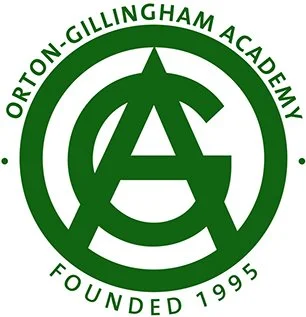My Approach
I am certified in using the Orton-Gillingham approach to help your child succeed.
What is the Orton-Gilligham approach?
The Orton-Gilligham (OG) approach is a structured, multisensory approach to teaching reading, writing, and spelling, primarily used to support individuals with dyslexia. It was developed in the early 20th century by Dr. Samuel Orton, a neurologist, and Anna Gillingham, an educator. This method is widely recognized and respected for its effectiveness in helping individuals with dyslexia, as well as other language-based learning disabilities.
The Navesink Reading Success Difference
The difference I provide is the focus on the Orton-Gillingham (OG) approach and the fact that I am Orton-Gillingham certified. OG is an approach to teaching skills rather than a “reading program”. Other instructors may be Orton-Gillingham trained but not certified. Other reading tutors may be trained in utilizing reading systems like the Wilson but are not innately trained in the core methods of dyslexic instruction.
Key features of the Orton-Gillingham approach include:
Multisensory Approach:
The method emphasizes the use of multiple senses (visual, auditory, and kinesthetic) simultaneously to enhance learning. This multisensory approach helps reinforce the connections between letters and sounds, making it easier for dyslexic individuals to grasp and retain information.
Structured and Sequential:
Lessons are carefully structured and follow a sequential order to build foundational skills. The approach starts with the most basic elements of language and progresses systematically, ensuring that learners master each skill before moving on to more complex ones.
Phonetic and Linguistic Principles:
The Orton-Gillingham method emphasizes phonetic instruction, teaching the relationship between sounds and their corresponding letters or letter combinations. Students learn phonetic rules and decoding strategies to improve reading accuracy and fluency.
Individualized and Flexible:
Lessons are tailored to the individual needs of learners. The Orton-Gillingham method recognizes that each person with dyslexia may have unique challenges, and instruction is adjusted accordingly. It can be adapted to suit different learning styles and paces.
Explicit Instruction:
The method involves explicit and direct instruction. Concepts are taught explicitly, and learners receive clear explanations and guidance. This is particularly important for individuals with dyslexia who may struggle with implicit learning.
Language Drill and Practice:
The method includes extensive drill and practice to reinforce learning. Repetition is used strategically to strengthen connections between sounds and symbols, helping to build automaticity in reading and spelling.
Continuous Assessment:
Ongoing assessment is an integral part of the Orton-Gillingham method. Teachers continually evaluate the progress of learners and adjust instruction based on individual needs. This ensures that students receive the support they need at each stage of their learning journey.
Application to Real Reading and Writing:
The ultimate goal of the Orton-Gillingham method is to enable individuals to apply their skills to real reading and writing tasks. The approach emphasizes the practical application of learned concepts in meaningful contexts.

Overall, the Orton-Gillingham method is designed to provide intensive, structured, and personalized instruction to help individuals with dyslexia develop strong reading and language skills. It has been influential in the development of many other reading intervention programs and remains a cornerstone in the field of dyslexia education.
I am certified in the Orton-Gillingham approach, so you can rest assured your child will receive the maximum benefits of this proven methodology to reading improvement.

